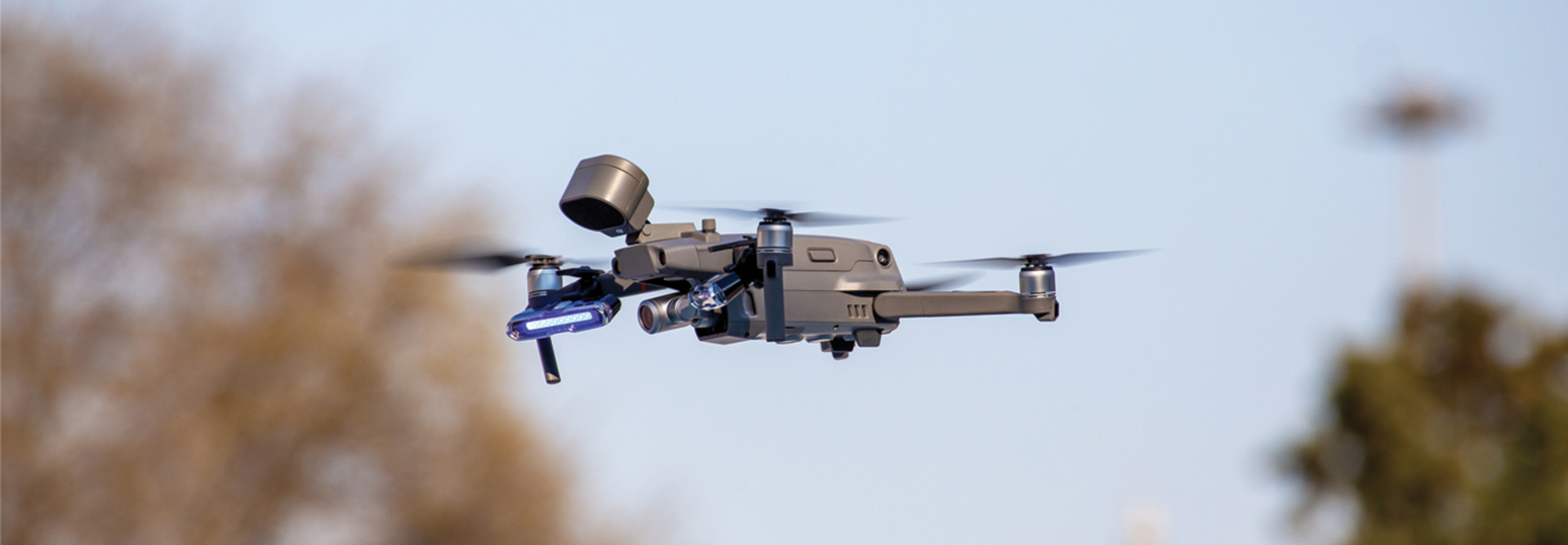Many Uses for Autonomous Drones
California’s Chula Vista Police Department is on the leading edge in using autonomous drones to respond to public safety emergencies. As The New York Times reports, the department’s “drones can cover about one-third of the city from two launch sites, responding to roughly 70 percent of all emergency calls” and the department is hoping to get authorization from the Federal Aviation Administration for a third launch site, to cover the entire city.
The drones can’t launch themselves or go on missions without authorization. We’re not in Terminator territory yet. As the Times reports:
Government regulations require that a certified pilot remain on the roof of the Police Department, overseeing the launch and, together with a police officer at a command station inside the building, handling most of the flying once the drone reaches its destination.
In December, the FAA approved regulations allowing operators of small drones to fly over people and at night under certain conditions. However, there are not currently rules that allow police drones to operate out of the line of sight of pilots.
The Chula Vista Police Department is using drones from a startup called Skydio, which, thanks to proprietary software, have the ability to avoid obstacles and can be programmed to follow a particular person or vehicle, the Times notes.
Skydio bills its drones as the next wave of UAV technology, with artificial intelligence software that can even predict a target’s next move. “We’re solving a lot of the core problems that are needed to make drones trustworthy and able to fly themselves,” CEO Adam Bry tells Forbes. “Autonomy — that core capability of giving a drone the skills of an expert pilot built in, in the software and the hardware — that’s really what we’re all about as a company.”
However, Skydio is still a small firm compared to the industry giant, China’s DJI. As Forbes reports, DJI’s U.S. market share is pegged at between 70 percent and 80 percent, with no other manufacturer above 10 percent. However, the U.S. Commerce Department put DJI on its Entity List in December, limiting how it can work with U.S. companies, The Verge reports. And although Congress did not put in place a ban on federal agencies buying drones from Chinese companies, the General Services Administration said on Jan. 12 it would remove nearly all drones from its multiple award schedule contracts.
The challenge for Skydio, and for police departments that might want to buy its AI-powered drones, including a quadcopter that costs as little as $1,000, is that it’s still a startup, albeit one that has raised $340 million in funding. It does not currently have the manufacturing capacity to compete toe-to-toe with DJI in the public safety market, though that could change if a larger firm bought Skydio.
The most important takeaway is that Skydio’s capabilities are showing the possibilities of how drones can be used in the public safety arena. Think of drones that could enter crashed vehicles or helicopters, conduct 360-degree surveillance around a moving target or pursue a specific officer. Autonomous drones are where the market is headed, and police departments should be considering these capabilities for their drone fleets moving forward.
Challenges Associated with Autonomous Drones
Autonomous drones have the potential to bring a great deal of utility to police departments and other public safety agencies. However, they also pose potential challenges that need to be addressed.
One is the fact that AI-based drones could become more dangerous vectors of attacks by malicious actors. As Engineering News-Record reports, “on April 11 and 12, several bomb-laden drones targeting oil refineries and military air bases in Saudi Arabia were shot down by Saudi military forces.”
The FAA is now testing drone detection and defeat technologies to thwart similar attacks against government buildings and critical infrastructure in the U.S, the news site reports.
“The agility, navigation, autonomy, swarming, AI-based technologies and better power and flight management tech will all make UAS more pervasive and give potential for a greater disruption,” Oleg Vornik, CEO of DroneShield, an unmanned aerial systems security firm, tells Engineering News-Record.
Although such threats are likely to be of concern to only the largest police departments in the country, they should still be taken seriously. Technology in the wrong hands can do a great deal of damage, as any cybersecurity professional can tell you. Moreover, current FAA regulations treat drones the same as planes and private property, so it would be difficult to legally shoot a drone out of the sky. Congress would need to pass new legislation to change that.
Another concern is the privacy of citizens, as autonomous drones could capture on film citizens engaged in criminal acts who are not the targets of investigations or could simply be collecting facial recognition data on people they pass over.
“Communities should ask hard questions about these programs. As the power and scope of this technology expands, so does the need for privacy protection,” Jay Stanley, a senior policy analyst with the American Civil Liberties Union’s Speech, Privacy and Technology Project, tells the Times. “Drones can be used to investigate known crimes. But they are also sensors that can generate offenses.”
These privacy concerns are not new, of course; they are similar to concerns about any other type of evidentiary platform, including police body cameras. However, public safety agencies should be involved in the ongoing dialogue over the reach and potential limits of autonomous drones.
AI-based drones are an indicator of the ways in which traditional police technologies are rapidly evolving. It’s unlikely that every agency across the country will be adopting drones in the near future, but public safety leaders should be aware of both the capabilities and limitations of this new platform as they plan for future investments.
This article is part of StateTech’s CITizen blog series. Please join the discussion on Twitter by using the #StateLocalIT hashtag.












